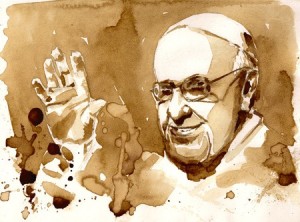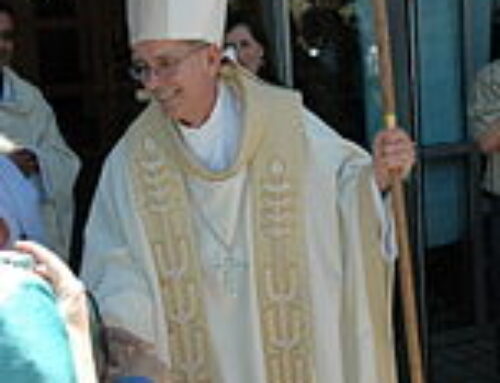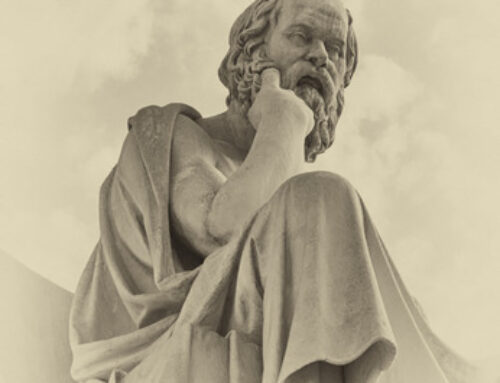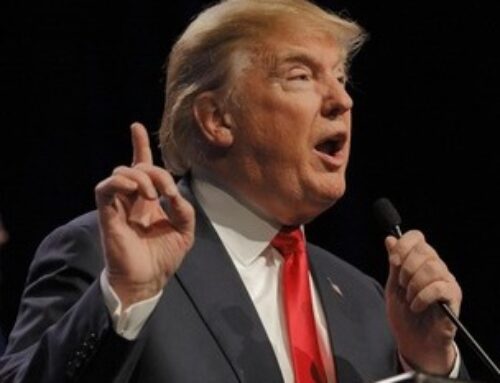 I recently expressed concern about the Catholic hierarchy’s troubling stance on homosexuality. Another statement by Pope Francis unfortunately increases rather than diminishes that concern. The statement was written in support of Jesuit father James Martin’s LGBT parish ministry, an effort designed “to help LGBT Catholics know that God loves them, that they are at the heart of their church and that they have many gifts to offer the People of God.”
I recently expressed concern about the Catholic hierarchy’s troubling stance on homosexuality. Another statement by Pope Francis unfortunately increases rather than diminishes that concern. The statement was written in support of Jesuit father James Martin’s LGBT parish ministry, an effort designed “to help LGBT Catholics know that God loves them, that they are at the heart of their church and that they have many gifts to offer the People of God.”
Father Martin asked Francis what he believed was the most important thing LGBT people should know about God. Francis responded: “God is Father and he does not disown any of his children, and ‘the style’ of God is ‘closeness, mercy and tenderness.’ Along this path you will find God.”
Taken alone, this response could be understood as a standard encouragement to sinners not to despair of their transgressions, but instead to trust that God will forgive them if they but ask. However, Francis’ answer to the next question suggests this is not the meaning Francis intended. Martin next asked how LGBT people should react when they experience rejection from the church. Francis answered as follows:
“I would have them recognize it not as ‘the rejection of the church,’ but instead of ‘people in the church.’ The church is a mother and calls together all of her children.”
This response is troubling in two ways. First, it suggests that the church and the people are two separate and distinct entities. But that is at odds with Catholic teaching. According to the website Catholic Culture, “Since the Council of Trent [1545-1563], the Catholic Church has been defined as a union of human beings who are united by the profession of the same Christian faith, and by participation of and in the same sacraments under the direction of their lawful pastors, especially of the one representative of Christ on earth, the Bishop of Rome.” (Vatican 2 expanded this to include all people who are baptized and accept Christ as their redeemer.) This passage makes clear that the “Catholic Church” is defined as the people. Francis himself has himself affirmed this in his public statements.
The second way Francis’ response is troubling is closely related to the first. By separating the church from the people, he creates a new tableau, with homosexuals as victims and heterosexual laypeople as unloving sinners. The bishops are not mentioned but, by implication, they are heroic defenders of the faith and protectors of the oppressed.
Taken together, the two aspects of Francis’ response ignore the undeniable reality that laypeople have never decided on their own what is a sin and what is a virtue, what is despicable and what is not, which actions lead to Heaven and which ones to Hell, and therefore which behaviors to practice and which to avoid. They have learned these things from the Catechism, which is approved, published, and disseminated by the hierarchy! So whatever ideas and attitudes laypeople have are fundamentally drawn from that source.
And what exactly have the teachers taught about homosexuality? If we examine passage 2357 in the Catechism, we find this: “Basing itself on Sacred Scripture, which presents homosexual acts as acts of grave depravity, tradition has always declared that ‘homosexual acts are intrinsically disordered. They are contrary to the natural law. They close the sexual act to the gift of life. They do not proceed from a genuine affective and sexual complementarity. Under no circumstances can they be approved.” [Emphasis added]
The next passage in the Catechism, 2358, demands kindness toward homosexuals. It says, “The number of men and women who have deep-seated homosexual tendencies is not negligible. This inclination, which is objectively disordered, constitutes for most of them a trial. They must be accepted with respect, compassion, and sensitivity. Every sign of unjust discrimination in their regard should be avoided.”
Passages 2357 and 2358 are obviously closely related and might be summarized as “hate the sin but love the sinner.” To ignore the part about the sin and focus only on the part about love—as Pope Francis has done—seriously misrepresents Catholic teaching.
How can Francis’ misrepresentation of the Church’s teaching on homosexuality and similarly misleading articles in Catholic publications, such as the Jesuit publication America Magazine, be explained? A definitive answer may be impossible to reach, yet three facts suggest a plausible explanation. Those facts are as follows:
1) Human Life International’s review of relevant research reveals that among Americans, 1.9% of men and 1.4% of women identify as LGBT. (An additional .8% of men and 1.8 of women identify as bisexual.) This difference a far cry from the 10% of homosexuals first asserted by Alfred Kinsey and repeated by journalists and scholars. In fact, roughly 97% of Americans identify as HETEROSEXUAL.
2) Estimates of homosexuality among Catholic priests and prelates vary greatly, but it is generally agreed that in the U.S the number is well above the national average. Various studies claimed between 15% and 33%. In his 2004 book, Sacred Silence, however, Fr. Donald Cozzens, estimated that from 23% to 58% of U.S. priests are homosexual.
3) In his 2019 book In the Closet of the Vatican, based on 1,500 interviews with knowledgeable people, French journalist Frédéric Martel concluded that fully 80 percent of the most revered clerics in the Roman Catholic Church are homosexual.
Even we allow for a degree of imprecision in some of the numbers, two facts are inescapable: The percentage of homosexuals in the U.S. Catholic priesthood is arguably ten times greater than the percentage in the U.S. population in general. Secondly, at the center of the Church—the Vatican—the percentage of homosexuals is considerably higher than that of the U.S. priesthood.
In light of these facts, the most plausible explanation for the misrepresentation of traditional Catholic teaching on homosexuality by Pope Francis, other prelates, and some leading Catholic journalists is that their closeness to the issue prevents them from treating it objectively or honestly. To be more precise, they are homosexuals themselves and thus have a personal interest in what is taught on the subject; or they have homosexual colleagues and friends whom they cannot bear hurting; or they believe—in violation of moral theology—that the end of maintaining a positive image for Catholicism justifies the means of false testimony.
If any part of this explanation is correct, Catholic laypeople—who, remember, comprise the Church—have been shamefully misled about homosexuality by their bishops, Pope Francis, and many journalists.
Copyright © 2022 by Vincent Ryan Ruggiero. All rights reserved


